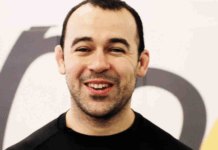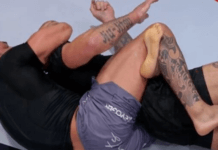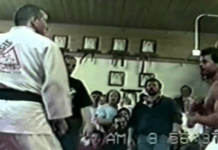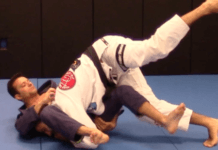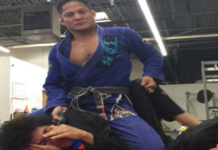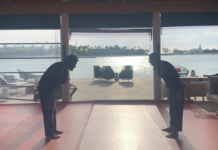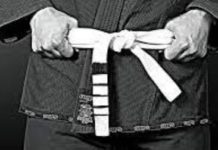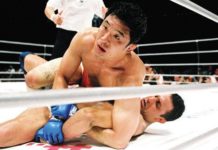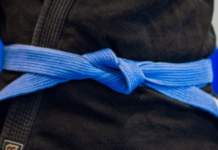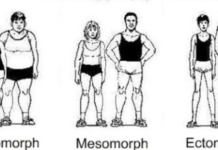Doping is a topic that returns like a boomerang. One could venture to say that large sporting events organized over many years, such as the Olympics or world championships, can not do without further doping scandals. Media raises cases of people caught doping now and then. More than once sports idols who performed “miracles” in their disciplines and climbed to the heights of human possibilities did not pass doping control. They were caught using steroids and/or blood transfusions. Since this topic is so popular, it’s worth taking a look at the subject of doping in BJJ.
What is doping?
Doping is increasing physical or mental efficiency by methods that go beyond normal training. More specifically, medical practices whose use is officially prohibited. The use of doping allows athletes to achieve results much better than after using only natural training. Of course, the use of steroids comes at a price, because it can (but does not have to) be harmful to health, lead to disability and in extreme cases even to death. Interesting fact: The first case of doping in modern sport was heard in 1865 at a swimming competition in Amsterdam. The first death case was recorded in 1896. At that time the British cyclist died after taking ephedra.
Doping itself can be divided into division according to the methods used or broken down by the purpose of doping:
Methods of Doping in BJJ
- pharmacological
Pharmacological doping involves the introduction of biologically active chemical compounds into the body to stimulate specific chemical processes. The most commonly used pharmacological agents are anabolic steroids (testosterone, tetrahydrogestrinone), hormones (e.g. erythropoietin) and stimulants (derivatives, e.g. amphetamines). Pharmacological doping agents, despite the fact that they are most easily detectable, are still the most popular. Also, new “specifics” are constantly appearing on the black market.
- physiological
In turn, physiological doping is nothing but a series of medical practices that temporarily increase the body’s efficiency. The most common form of this type of doping (due to difficult detection) is blood transfusions. Regardless of the type of transfusion (transfusions of previously-stored own blood or blood from selected donors), they are aimed at maximizing the number of red blood cells in the body. This, in turn, results in faster oxygen supply to the muscles, which in turn leads to greater endurance. As blood transfusion completely cleanses the body of traces of pharmacological doping, both types of doping can be used “complementarily”.
- Genetic
On the other hand, genetic doping is the latest technique for increasing the body’s efficiency. It involves manipulation of the genetic code by increasing the number of tissue cells particularly needed for practicing a given sport, implanting previously modified foreign tissue multiplying in the body, or administering preparations containing genetically modified microorganisms ( bacteria that make specific hormones). This type of doping is practically undetectable and so far it can not be clearly stated whether it is used at all.
Why BJJ practiciones abuse P
- Strengthening doping – aimed at increasing the player’s muscle mass
- Endurance doping – leads to a permanent increase in the body’s ability to endure prolonged, intense physical effort
- Stimulating doping -a series of practices aimed at temporarily increasing pain and effort resistance
Negative consequences of taking Steroids
The most common effects of doping are the following:
- skin changes – the appearance or worsening of acne and stretch marks caused by a rapid increase in muscle mass,
- alopecia – steroids accelerate the process of baldness; it is an irreversible process,
- liver damage – steroids destroy the structure of the liver, leading, among others to her necrosis,
- growth inhibition – most anabolic agents inhibit bone growth; it is dangerous especially for people during adolescence when normal body development stops,
- high blood pressure – this is due to the rapid increase in muscle mass, for which the heart is not yet adapted,
- addiction – regular use of anabolic steroids leads to addiction,
- hormonal changes – associated with the use of testosterone or its derivatives.
The effects of hormonal changes include:
- the appearance of male traits in women, including facial hair, male voice, cycle disorder, infertility,
- oligospermia, i.e. a decrease in the amount of sperm in the semen, leading to infertility,
- testicular atrophy (or their atrophy) manifested in the shrinkage of cells responsible for testosterone and sperm production,
- gynecomastia – enlargement of the nipples in men.
Approach to doping in a professional BJJ
The issue of doping in professional BJJ seems to be well known but only occasionally talked about. For example, 2 times BJJ World Champion Nicholas Meregali mentioned it totally casually while giving an interview. He was talking about how gaining weight is problematic for him and then from nowhere, he said: “I don’t use any anabolics Illicit substances, which are normal in the sport.” He mentioned using steroids as if he said the sky was blue like it is not a big deal at all.
However, the topic seems to be getting more serious since the anti-doping regulations were introduced by IBJJF in 2013. In their official statement, we can read that “The International Brazilian Jiu-Jitsu Federation (IBJJF) is against the practice of doping in sport, on ethical and medical grounds.” IBJJF also underlines the value of clean competition. It has taken a proactive stance in implementing an anti-doping program on behalf of clean athletes and the integrity of our sport. Further in the statement, we can read that the IBJJF will not tolerate the use of banned substances or methods in their events.
What’s more, IBJJF in their Anti-doping Policy wants to:
– Promote Brazilian Jiu-Jitsu as a drug-free sport;
– Uphold and preserve the ethics of Sport;
– Ensure that all competitors have an opportunity to compete equally;
– Safeguard the physical wellbeing and mental trustworthiness of the competitors;
– Encourage Affiliate Federations to execute comparative guidelines with their competitors.
Cases of people caught doping in BJJ
In 2014, an anti-doping committee reported that the illegal substance clomiphene was detected in the body of multiple champion Gabi Garcia. It is used to reduce negative effects of steroids. The Brazilian was taken away the gold and silver medal of the 2013 World Cup and two gold medals of the Pan American Championship.
Her case was not an isolated one. During the BJJ World Championships in June 2014, Braulio Estima won gold in the medium heavyweight division. After the tournament, Estima was tested by USADA. The test result was positive for the presence of Methylhexaneamine (DMAA) in the body, which is one of the Performance Enhancing Drugs (PED). Braulio Estima was stripped of his title by IBJJF and USADA and suspended for two years.
Felipe Pena, another gold medalist of the BJJ World Championships in the black belt category, was a bit luckier. He was suspended only for a year. Pena was disqualified from all tournaments in which he participated after May 31, 2014. Also, he was taken away all the medals he had obtained at that time. All of this because he was tested positive for anabolic steroids (testosterone) use.
Another person caught doping is – Leo Nogueira, 2016 World Super Heavyweight Champion. A substance called clomiphene has been detected in his blood. It’s the same substance reducing negative effects of steroids on which Gabi Garcia was caught. Leonardo Nogueira was thus stripped of the 2016 championship. He was also prohibited from participating in IBJJF events for 2 years.
The lightweight athlete Paulo Miyao also ran into doping. On his Instagram, you could read that he ended up failing in the USADA anti-doping test made during the 2016 World Championship. He statted he wants to apologize to all who accompanied and supported him. And takes full responsibility for what he has done and is sorry to his training partners and teachers. Also, he said sorry for his opponents in the Worlds 2016. Paulo Miyao was disqualified for 2 years. Again, it was the same situation as with Leo Nogueira and Gabi Garcia, clomiphene was detected in his blood.
The woman started the list of people who caught up in doping in BJJ. Also, a female competitor is finishing it. In 2018, Tayane Porfirio has tested positive for a prohibited substance and accepted a four-year sanction for her anti-doping rule violation. She was caught using steroids such as 19‐norandrosterone (19‐NA) and 19-noretiocholanolone.
Conclusion: steroids most popular in BJJ
Ass follows from the above cases, steroids use is the most popular form of doping in BJJ. From the list of people caught on it since the introduction of the IBJJF regulations, only one has used something other than steroids. This is probably due to the fact that pharmacological doping, in particular, steroids are the easiest to use. However, there are also the easiest to detect. There is a chance, then, that the other competitors use more sophisticated methods that are not just as easy to detect. You know what they say, that doping is an intelligence test – only the stupid get caught.
Doping in amateur BJJ
Professional athletes are obviously not the only users of doping. Doping, most often in the form of steroids, finds its amateurs also among “ordinary” people striving to improve their figure or their performance. Not surprisingly, BJJ practitioners also use such substances. However, there is no research or data on this topic. Nobody tests anybody at smaller competitions. Therefore, it cannot be clearly stated how popular use of substances as steroids or PED is in amateur BJJ.
However, what can be observed among those practicing jiu jitsu is stratification in the assessment of the use of doping in BJJ in general. On the one hand, there are voices that all of us as a community should fight doping. Proponents of the anti-doping policy emphasize that even amateur athletes and coaches in gyms have a responsibility to clearly indicate that illegal doping of any kind will not be tolerated in their gyms. If the BJJ community really wants the sport to grow they need to urgently look into establishing a zero-tolerance policy towards doping before it is too late.
On the other hand, there are opinions that doping in amateur BJJ is a completely individual matter and everyone can do what they want. In addition, people on this side of the barricade even state that in professional BJJ doping should also be allowed. They claim that they would rather watch a 15-minute super fight between to grapplers in the physical peak rather than a 10-minute stall fest between grapplers who are underpaid, overworked and exhausted. If they need to take something to do it, “doping supporters” are okay with it.
Summarizing
Doping seems to be a phenomenon that has been and will be practically in every sport. Doping in BJJ, therefore, does not seem unusual. We can probably forget about its complete legalization, as some would like. But the same thing is with the complete eradication of the phenomenon, it is also impossible. Probably everything will go on at a similar pace and soon we will hear again about some top competitors who ran into doping. Do you have any ideas who can it be this time? Any suspects?

